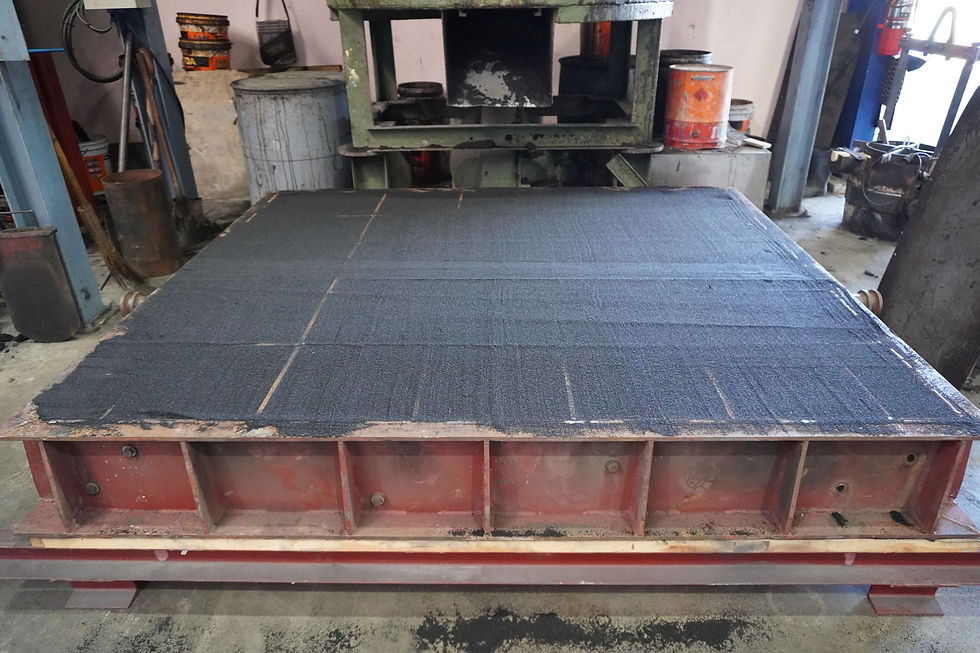Introduction to Furan Molding
Furan molding is a chemical molding process highly regarded in the metal casting industry for its ability to create high-quality and dimensionally accurate castings. Known for producing intricate and detailed parts, furan molding is used in applications where precision and surface finish are crucial. This blog post explores the furan molding process, its advantages, challenges, and typical applications, offering insights into why it’s a preferred choice in advanced casting.
What is Furan Molding?
Furan molding uses a furan resin binder mixed with sand to create molds for casting metals. The furan resin, derived from furfuryl alcohol, acts as an effective binder. When combined with an acid catalyst, it hardens and binds the sand grains, forming a robust mold capable of withstanding the pouring and solidification of molten metal.
Key Components of Furan Molding:
Sand: Typically silica sand, providing the primary structure for the mold.
Furan Resin: Acts as a binder, giving strength and rigidity to the mold.
Catalyst (Acid): Causes the furan resin to harden and bond the sand together.
The Furan Molding Process:
Sand Preparation: Sand is mixed with furan resin and a catalyst to form a sand-resin mixture.
Pattern Making: A pattern is created, representing the shape of the final casting.
Mold Formation: The sand-resin mixture is packed around the pattern in a molding box, forming the mold.
Curing: The mixture cures at room temperature, hardening into a strong mold around the pattern.
Pattern Removal: Once the mold is fully cured, the pattern is removed, leaving a cavity shaped like the desired casting.
Core Placement (if required): Sand cores can be added to form internal cavities or complex geometries in the final casting.
Mold Assembly: The mold halves are assembled, and the cavity is prepared for metal pouring.
Metal Pouring: Molten metal is poured into the mold cavity through a gating system, filling the void and taking the shape of the pattern.
Cooling: The metal cools and solidifies within the mold.
Shakeout: The mold is broken apart to retrieve the solidified casting.
Cleaning and Finishing: The casting is cleaned, and any necessary finishing operations are performed to meet final specifications.

Benefits of Furan Molding:
High Precision: Furan molds offer excellent dimensional accuracy and surface finish, ideal for complex and intricate designs.
Strength and Durability: The cured furan resin provides strong and durable molds capable of withstanding the rigors of metal casting.
Minimal Gas Defects: The process produces fewer gas-related defects in castings, leading to higher-quality products.
Versatility: Suitable for a wide range of metals, including ferrous and non-ferrous alloys.
Energy Efficiency: The process typically cures at room temperature, reducing energy consumption compared to other methods requiring heating.
Challenges of Furan Molding:
Longer Setup and Curing Time: Compared to other processes like green sand molding, furan molding typically requires longer setup and curing times. This can lead to slower production cycles and may not be as suitable for high-volume or rapid production environments.
Higher Material Costs: Furan resins and the required catalysts are generally more expensive than traditional binders used in other processes, such as clay in green sand molding or sodium silicate in CO₂ molding. This can increase overall production costs, especially for large-scale casting operations.
Complex Demolding Process: The hardened furan resin can make the demolding process more challenging compared to other methods. For instance, green sand molds, which are softer and more flexible, often allow for easier removal of the casting from the mold without damaging the product.
Applications of Furan Molding:
Automotive Industry: High-precision components like engine blocks, cylinder heads, and transmission cases are often produced using furan molding.
Aerospace: The process is used to create complex aerospace components where precision and strength are crucial.
Heavy Machinery: Large and intricate parts for industrial machinery benefit from the high strength and accuracy of furan molds.
Valve and Pump Components: The method is suitable for manufacturing detailed valve bodies and pump housings.
Conclusion
Furan molding stands out in the casting industry for its ability to produce high-quality, precise castings with minimal defects. Despite the challenges, such as setup time and material costs, its advantages in producing complex and durable parts make it a valuable technique for critical applications in automotive, aerospace, and heavy machinery manufacturing. Understanding the furan molding process and its benefits can help you leverage this technique to achieve superior casting results for your projects.
If you are interested to produce your part in Thailand with furan molding process, please feel free to contact us anytime by clicking the link below.
_edited.jpg)
Comments